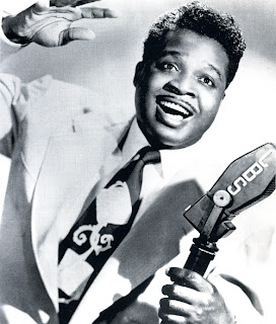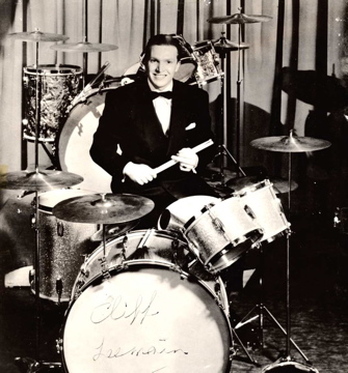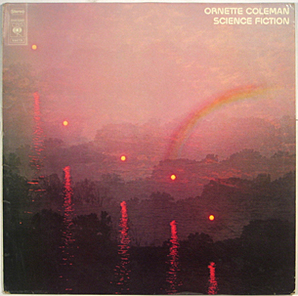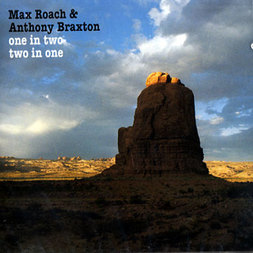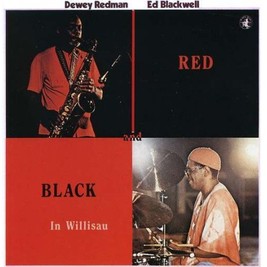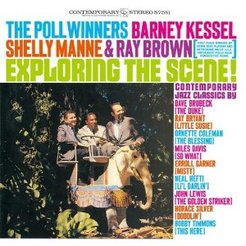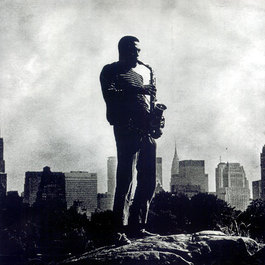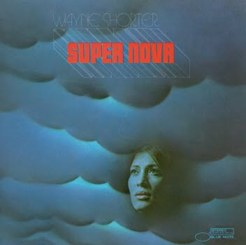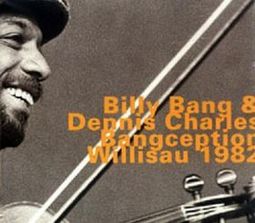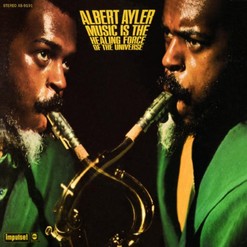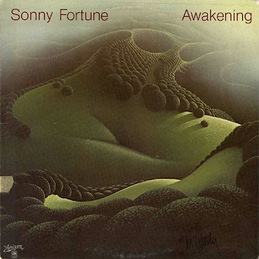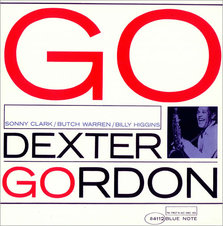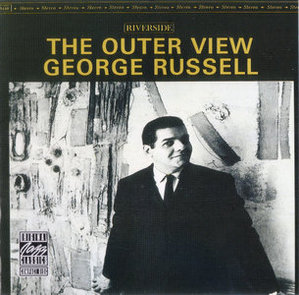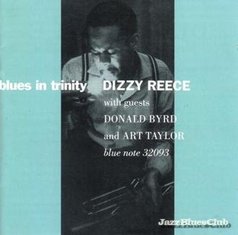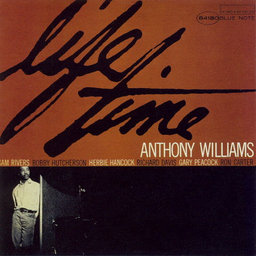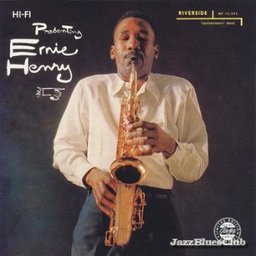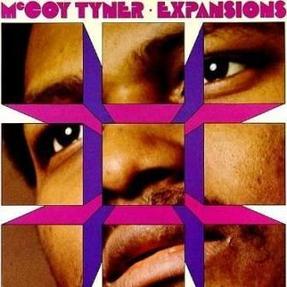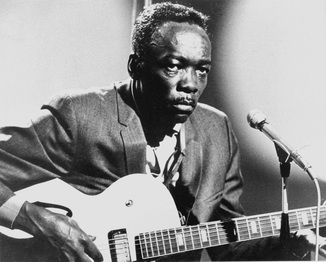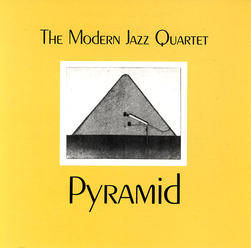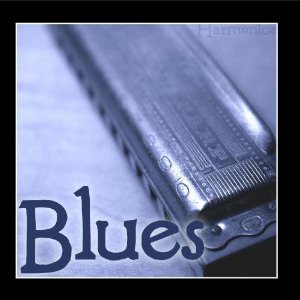BLUES ARTIST BIRTHDAY: Roy Brown (1925) - When you draw up a short list of the R&B pioneers who exerted a primary influence on the development of rock & roll, respectfully place singer Roy Brown's name near its very top. His seminal 1947 DeLuxe Records waxing of "Good Rockin' Tonight" was immediately ridden to the peak of the R&B charts by shouter Wynonie Harris and subsequently covered by Elvis Presley, Ricky Nelson, Jerry Lee Lewis, and many more early rock icons. In addition, Brown's melismatical (singing of a single syllable of text while moving between several different notes in succession) pleading, gospel-steeped delivery impacted the vocal styles of B.B. King, Bobby Bland, and Little Richard (among a plethora of important singers). Clearly, Roy Brown was an innovator -- and from 1948-1951, an R&B star whose wild output directly presaged rock's rise. After a long dry spell, Brown's acclaimed performance as part of Johnny Otis' troupe at the 1970 Monterey Jazz Festival and a 1973 LP for ABC-BluesWay began to rebuild his long-lost momentum. But it came too late; Brown died of a heart attack in 1981 at age 56, his role as a crucial link between postwar R&B and rock's initial rise still underappreciated by the masses.
JAZZ ARTIST BIRTHDAY: Cliff Leeman (1913) - “I try to play behind the soloist. I’d rather play a four-bar chase chorus with a horn, something with different tones and sounds, than get into a rudimental solo,” said Cliff Leeman, one of jazz drumming’s most tasteful artists. Never the showman -- therefore, not well recognized by the public -- Leeman concentrated on making the band sound good and the players feel comfortable. Greatly admired by musicians, Leeman was popular in big band circles for his marvelous timekeeping and effortless swing. A great admirer of Zutty Singleton, Jo Jones and Sid Catlett, Leeman possessed a style that was the embodiment of good taste combined with an artistic musical approach. Though quite capable of playing outstanding solos, Leeman had little desire to do so. Quite content remaining in a totally supportive position, his refined sense of swing and rock-solid timing uplifted every band he worked with. He died on April 26, 1986.
JAZZ ALBUM RECORDED: Ornette Coleman – Science Fiction (1971)
Track Listing:
1. What Reason Could I Give?
2. Civilization Day
3. Street Woman
4. Science Fiction
5. Rock the Clock
6. All My Life
7. Law Years
8. The Jungle Is a Skyscraper
Review by Steve Huey at Allmusic:
Ornette Coleman's first album for Columbia followed a stint on Blue Note that found the altoist in something of a holding pattern. Science Fiction was his creative rebirth, a stunningly inventive and appropriately alien-sounding blast of manic energy. Coleman pulls out all the stops, working with a variety of different lineups and cramming the record full of fresh ideas and memorable themes. Bassist Charlie Haden and drummers Billy Higgins and/or Ed Blackwell are absolutely indispensable to the overall effect, playing with a frightening, whirlwind intensity throughout. The catchiest numbers -- including two songs with Indian vocalist Asha Puthli, which sound like pop hits from an alternate universe -- have spacy, long-toned melodies that are knocked out of orbit by the rhythm section's churning chaos, which often creates a totally different pulse. Two tracks reunite Coleman's classic quartet of Haden, Higgins, and Don Cherry; "Street Woman" just wails, and "Civilization Day" is a furious, mind-blowing up-tempo burner. "Law Years" and "The Jungle Is a Skyscraper" feature a quintet with Haden, Blackwell, tenorist Dewey Redman, and trumpeter Bobby Bradford; both have racing, stop-start themes, and "Jungle"'s solos have some downright weird groaning effects. "Rock the Clock" foreshadows Coleman's '70s preoccupations, with Redman playing the musette (an Arabic double-reed instrument) and Haden amplifying his bass through a wah-wah pedal to produce sheets of distorted growls. The title track is a free septet blowout overlaid with David Henderson's echoed poetry recitations, plus snippets of a crying baby; it could sound awkward today, but in context it's perfectly suited to the high-octane craziness all around it. Science Fiction is a meeting ground between Coleman's past and future; it combines the fire and edge of his Atlantic years with strong hints of the electrified, globally conscious experiments that were soon to come. And, it's overflowing with brilliance.
We'll be back with more Blues Bits & Jazz Jots on 9/10/12!
JAZZ ALBUMS RECORDED: Max Roach & Anthony Braxton – One in Two, Two in One (1979)
Track Listing:
1. One in Two Two in One, Pt. 1
2. One in Two Two in One, Pt. 2
Review by Scott Yanow at Allmusic:
The second of two duet albums by drummer Max Roach and multi-reedist Anthony Braxton was recorded live and released on this two-LP set; this is the more interesting of the two projects since it is a nearly 78-minute continual improvisation. Braxton gets to stretch out on alto, soprano, sopranino, contra bass clarinet (which really gets a monstrous sound), clarinet, and flute. With Roach pushing Braxton, the results are quite adventurous, yet full of joy. Followers of avant-garde jazz can consider this set to be essential.
Dewey Redman & Ed Blackwell – In Willisau (1980)
Track Listing:
1. Willisee
2. We Hope
3. F I
4. Communication
5. S 126 T
Review by Scott Yanow at Allmusic:
Review Tenor saxophonist Dewey Redman and drummer Ed Blackwell had first met up in the late '60s in Ornette Coleman's band and later on as half of Old And New Dreams. This set of live duets from the Willisau '80 Jazz Festival succeeds due to Redman's huge sound, Blackwell's colorful rhythms, and the close interplay between the two. Redman's musette playing on "We Hope" is an acquired taste, but otherwise, his tenor playing is heard in top form on his originals, particularly "Communication" and "Willisee," which clock in at just over 14 minutes apiece. Although some listeners will miss the usual chordal instruments (and particularly the bass), this combination works.
JAZZ ALBUMS RECORDED: The Poll Winners – Exploring the Scene (1960)
Track Listing:
1. Little Susie
2. The Duke
3. So What
4. Misty
5. Doodlin’
6. The Golden Striker
7. Li’l Darlin’
8. The Blessing
9. This Here
Review by Scott Yanow at Allmusic:
For one of their better outings, The Poll Winners (guitarist Barney Kessel, bassist Ray Brown, and drummer Shelly Manne) perform nine fairly recent jazz standards. It is ironic that this is their only release not yet reissued on CD, since it may very well be their strongest program. The trio performs creative versions of such songs as "Little Susie," "So What," "Doodlin'," "This Here," and Ornette Coleman's "The Blessing." Worth searching for.
Sonny Simmons – Staying on the Watch (1966)
Track Listing:
1. Metamorphosis
2. A Distant Voice
3. City of David
4. Interplanetary Travelers
Review by Alex Henderson at Allmusic:
Sonny Simmons, whose work with flutist Prince Lasha had put him on the map in West Coast avant-garde jazz circles, had an important year in 1966. That was the year the alto saxophonist recorded Staying on the Watch, his first album as a full-fledged leader; Lasha and Simmons had been co-leaders on 1962's The Cry!, but on this session, Simmons is the only one in the driver's seat. Not surprisingly, Simmons recorded Staying on the Watch for ESP-Disk, which reissued the album on CD in 2010. ESP's reputation for being cutting-edge is well deserved -- while Impulse! could be quite daring where experimental jazz was concerned, ESP was downright fearless -- and Simmons' playing is delightfully uninhibited and free-spirited on four original compositions: "Metamorphosis," "A Distance Voice," "City of David," and "Interplanetary Travelers." That isn't to say that Staying on the Watch is an exercise in atonal chaos; Simmons' performances aren't as extreme as the free jazz that John Coltrane was offering in 1966. This is inside/outside playing (more outside than inside) rather than absolute atonality from start to finish. But even so, there is a lot of intensity coming from Simmons and the four musicians who form an acoustic quintet with him: trumpeter Barbara Donald (Simmons' wife at the time), pianist John Hicks, bassist Teddy Smith, and percussionist Marvin Pattillo. Density prevails on Staying on the Watch, and density is the thing that can make one avant-garde jazz recording a lot more jarring than another. If one compares Staying on the Watch to AACM icon and fellow altoist Roscoe Mitchell's Sound -- another historic avant-garde album that was recorded in 1966 -- it isn't hard to see why this 44-minute CD is more intense. For all its abstraction, the innovative and highly influential Sound emphasized the use of space and was a departure from the density that had characterized so much avant-garde jazz in the early to mid-‘60s. Simmons and Mitchell were alto explorers who had two different left-of-center visions in 1966, one just as valid as the other -- and Simmons' recording career as a leader was off to an exciting start with Staying on the Watch.
JAZZ ALBUMS RECORDED: Wayne Shorter – Supernova (1969)
Track Listing:
1. Supernova
2. Sweet Pea
3. Dindi
4. Water Babies
5. Capricorn
6. More Than Human
Review by Scott Yanow at Allmusic:
This CD reissue brings back an important transitional album for tenor-saxophonist Wayne Shorter. Doubling on soprano (which he had recently begun playing), Shorter interprets five of his originals (including "Water Babies" which had been recorded previously by Miles Davis) and Antonio Carlos Jobim's "Dindi." He definitely used a forward-looking group of sidemen for his "backup band" includes guitarists John McLaughlin and Sonny Sharrock, Walter Booker (normally a bassist) on classical guitar for "Dindi," bassist Miroslav Vitous, both Jack DeJohnette and Chick Corea (!) on drums and percussionist Airto; Maria Booker takes a vocal on the touching version of "Dindi." The influence of Miles Davis' early fusion period is felt throughout the music but there is nothing derivative about the often-surprising results. As with Wayne Shorter's best albums, this set rewards repeated listenings.
Billy Bang & Dennis Charles – Bangception (1982)
Track Listing:
1. Air Traffic Control
2. Lonely Woman
3. Thelonious
4. Closer to the Flower
5. Know Your Enemy
Review by Thom Jurek at Allmusic:
This 1982 date by violinist Billy Bang (previously with Ronald Shannon Jackson & the Decoding Society) and the late drummer Denis Charles is, for lack of a better term, a full frontal attack on the senses. In his liner notes, Art Lange makes the case for Bang being the focal point of this recording. That's fair enough, considering that his name is first and it's kinda named after him, but Lange, in this very rare case, misses the point. Bang's phrasing in the opening improvisation "Air Traffic Control" comes right out of Charles' opening solo. Charles' rolls and stuttered rim shots grant Bang a passageway into his own beginning. Later in the track when Charles is slashing his cymbals and Bang is sawing through chords to match the dynamic, it becomes obvious just how much a collaboration this set is. When Bang cues up Ornette Coleman's "Lonely Woman," again, it's the hushed cymbal and brushes work of Charles that opens a dimensional door for Bang's idiosyncratic read of the melody. Charles punctuates it in all the right spaces, keeping the framework of the tune from disappearing into the improvisation. And so it goes, with this pair crisscrossing back and forth over the great divide of improvisational phraseology. Charles' tone on the drums is low, not thunderous but like rolling thunder in the distance; his brushwork is blinding and full of control. Bang literally invented a method of playing the new music on violin. His phrasing and improvisational ideas are sometimes outrageously childlike and simple and in the next moment as wily and complex as you are likely to hear in Western harmony. And while it is true that this is a skeletal set, as full of space as it is "music," it is very satisfying nonetheless.
JAZZ ALBUMS RECORDED: Albert Ayler – Music is the Healing Force of the Universe (1969)
Track Listing:
1. Music is the Healing Force of the
Universe
2. Masonic Inborn, Pt. 1
3. A Man is Like a Tree
4. Oh! Love of Life
5. Island Harvest
6. Drudgery
Review by Al Campbell at Allmusic:
Music Is the Healing Force of the Universe is a powerful and often ignored recording from the Albert Ayler catalog. It is a prophetic statement dealing with guilt, confusion, sorrow, and hopes of redemption. A powerful rhythm section of Bobby Few on piano, Stafford James and James Folwell on bass, (Folwell on electric fender bass), and Muhammad Ali on drums manage to take a backseat to the prominent vocals of Ayler's business associate and girlfriend Mary Parks, listed on the record as Mary Maria. Her emotional vocals are featured on "Music Is the Healing Force of the Universe," "Man Is Like a Tree," and "Island Harvest." Throughout these tracks Maria sounds as if she is pleading and reasoning not just universally, but directly with Ayler, trying to convince him of the positive aspects of life and her evangelistic shouts of "be healed" on the title track can prove uncomfortable. "Masonic Inborn" is an instrumental track finding Ayler not only overdubbing cacophonous bagpipe solos but also playing ocarina. "Oh Love Is Life" is Ayler's sole vocal performance on the album, his words and vocal delivery are truly frightening. This is a dreamlike plea to the sources haunting his soul to succumb to universal love. Following the intensity of the previous five tracks, the album closes with the hazy gutbucket blues of "Drudgery" reminiscent of the New Grass sessions, adding guitarist Henry Vestine of the blues rock band Canned Heat. Ayler's musical curtain was eerily closing the same way it started -- playing the blues of his high school summer vacations as a member of Little Walter's band. Music Is the Healing Force of the Universe, along with tracks that were released posthumously on The Last Album, were recorded at the same session. While not easy listening, they complete an important portrait of a man facing a life and death inner struggle beyond the boundaries of jazz. The inevitable outcome culminated on November 25, 1970, when Ayler's drowned body was found floating in New York's East River. Music Is the Healing Force of the Universe was reissued for the first time on CD by Verve in March 2003.
Sonny Fortune – Awakening (1975)
Track Listing:
1. Triple Threat
2. Nommo
3. Sunshower
4. For Duke and Cannon
5. Awakening
Review by Vincent Thomas at Allmusic:
Sonny Fortune's second LP as a leader is an adequate set of mostly straight-ahead jazz, which sets it apart from many of his fusion-venturing peers of the '70s. With a slate of expert, professional sidemen (Billy Hart, John Hicks, Reggie Workman, Charles Sullivan, etc.), Awakening never amazes, but it also never disappoints. Fortune, as usual, offers several spirited solos, while his cohorts incessantly swing. Straight-ahead jazz fans will appreciate this yeoman set.
JAZZ ALBUMS RECORDED: Dexter Gordon – Go! (1962)
Track Listing:
1. Cheese Cake
2. I Guess I’ll Hang My Tears Out
to Dry
3. Second Balcony Jump
4. Love for Sale
5. Where Are You?
6. Three O’Clock in the Morning
Review by Stacia Proefrock at Allmusic:
From the first moments when Dexter Gordon sails into the opening song full of brightness and confidence, it is obvious that Go! is going to be one of those albums where everything just seems to come together magically. A stellar quartet including the stylish pianist Sonny Clark, the agile drummer Billy Higgins, and the solid yet flexible bassist Butch Warren are absolutely crucial in making this album work, but it is still Gordon who shines. Whether he is dropping quotes into "Three O'Clock in the Morning" or running around with spritely bop phrases in "Cheese Cake," the album pops and crackles with energy and exuberance. Beautiful ballads like "I Guess I'll Hang My Tears Out to Dry" metamorphosize that energy into emotion and passion, but you can still see it there nonetheless. Gordon had many high points in his five decade-long career, but this is certainly the peak of it all.
George Russell Sextet – The Outer View (1962)
Track Listing:
1. Au Privave
2. Zig-Zag
3. The Outer View
4. The Outer View
5. You Are My Sunshine
6. D.C. Divertimento
Review by Scott Yanow at Allmusic:
Composer George Russell's early-'60s Riverside recordings are among his most accessible. For this set (the CD reissue adds an alternate take of the title cut to the original program), Russell and his very impressive sextet (which is comprised of trumpeter Don Ellis, trombonist Garnett Brown, Paul Plummer on tenor, bassist Steve Swallow and drummer Pete La Roca) are challenged by the complex material; even Charlie Parker's blues "Au Privave" is transformed into something new. It is particularly interesting to hear Don Ellis this early in his career. The most famous selection, a very haunting version of "You Are My Sunshine," was singer Sheila Jordan's debut on records.
JAZZ ALBUMS RECORDED: Dizzy Reece – Blues in Trinity (1958)
Track Listing:
1. Blues in Trinity
2. I Had the Craziest Dream
3. Close-Up
4. Shepherd’s Serenade
5. Color Blind
6. ‘Round About Midnight
7. Eboo
8. Just a Penny
Review by Stephen Thomas Erlewine at Allmusic:
As Dizzy Reece's first album for Blue Note, Blues in Trinity goes a long way to establish the trumpeter's signature sound. Reece doesn't take chances stylistically; he prefers to stay within the confines of hard bop. Nevertheless, he has a bold, forceful sound that simply burns with passion. Even on slower numbers, there's a fire to his playing that keeps Blues in Trinity from being predictable. The high quality of the album is even more impressive given the recording circumstances. The English-based Reece was playing in Paris at the time, and he assembled a sextet featuring the vacationing British musicians Tubby Hayes (tenor saxophone) and Terry Shannon (piano), visiting American stars Donald Byrd (trumpet) and Art Taylor (drums), and Canadian bassist Lloyd Thompson, who was playing in Paris with Zoot Sims. Although the band was thrown together, there's a definite spark to this combo, which interacts as if it had been playing together for a long time. Throughout it all, Reece steals the show with his robust playing, and that's why Blues in Trinity rises above the level of standard-issue hard bop and becomes something special.
Anthony Williams – Life Time (1964)
Track Listing:
1. Two Pieces of One: Red
2. Two Pieces of One: Green
3. Tomorrow Afternoon
4. Memory
5. Barb’s Song to the Wizard
Review by Scott Yanow at Allmusic:
Drummer Tony Williams' first recording as a leader (made when he was 18 and still billed as Anthony Williams) gave him an opportunity to utilize an advanced group of musicians: tenor saxophonist Sam Rivers, vibraphonist Bobby Hutcherson, pianist Herbie Hancock, and both Richard Davis and Gary Peacock on bass. Williams wrote all four of the pieces and has a different combination of players on each song. The freely improvised "Memory" features Hutcherson, Hancock, and Williams in some colorful and at times spacy interplay; "Barb's Song to the Wizard" is a Hancock-Ron Carter duet; "Tomorrow Afternoon" has Rivers, Peacock and Williams in a trio; and all of the musicians (except Hutcherson) are on the sidelong "2 Pieces of One." The unpredictable music holds one's interest; a very strong debut for the masterful drummer.
JAZZ ALBUMS RECORDED: Ernie Henry - Presenting Ernie Henry (1956)
Track Listing:
1. Gone With the Wind
2. Orient
3. Free Flight
4. Checkmate
5. Active Ingredients
6. I Should Care
7. Cleo’s Chant
Review by Scott Yanow at Allmusic:
Altoist Ernie Henry's first of three sessions as a leader, all of which were made within 16 months of his premature death, served as a strong debut. Joined by trumpeter Kenny Dorham, pianist Kenny Drew, bassist Wilbur Ware and drummer Art Taylor, Henry -- who always had a distinctive tone -- performs five of his boppish originals, plus "Gone With the Wind" and "I Should Care." Throughout the date, Henry hints strongly at the great potential he had. This set has thus far only been reissued by the OJC series on LP.
McCoy Tyner – Expansions (1968)
Track Listing:
1. Vision
2. Song of Happiness
3. Smitty’s Place
4. Peresina
5. I Thought I’d Let You Know
Review by Scott Yanow at Allmusic:
Of pianist McCoy Tyner's seven Blue Note albums of the 1967-1970 period,
Expansions is the most definitive. Tyner's group (comprised of trumpeter Woody Shaw, altoist Gary Bartz, tenor saxophonist Wayne Shorter, Ron Carter on cello, bassist Herbie Lewis, and drummer Freddie Waits) is particularly strong, the compositions (four Tyner originals plus Calvin Massey's "I Thought I'd Let You Know") are challenging, and the musicians seem quite inspired by each other's presence. The stimulating music falls between advanced hard bop and the avant-garde, pushing and pulling at the boundaries of modern mainstream jazz.
BLUES ARTIST BIRTHDAY: John Lee Hooker (1917), blues singer and guitarist, came from a cotton-sharecropping family. He learned the blues from his stepfather and various visiting Delta bluesmen, constructing his first instrument from strings made of rubber inner tube nailed to a barn. He left home at 14, sang with gospel groups, and ultimately moved to Detroit in 1943. Hooker made his first recording, the rhythm and blues hit "Boogie Chillun" in 1948. Accompanying himself on electric guitar, he recorded more than 100 albums, mainly of slow blues or fast boogies, and toured throughout the United States. After Hooker was "discovered" by the white blues-rockers of the 1960s, he recorded with several rock musicians and influenced a generation of players and singers. After a fifty year career of remarkable staying power and flexibility, Hooker entered the period of his greatest popularity and influence after his 70th birthday. He again reached a wide public with his albums The Healer (1989) and Don't Look Back (1997). He won three Grammy Awards and was inducted into the Rock and Roll Hall of Fame in 1991. Hooker fell ill just before a tour of Europe in 2001 and died in June 21st at the age of 83, two months before his 84th birthday.
JAZZ ALBUM RECORDED: The Modern Jazz Quartet – Pyramid (1959)
Track Listing:
1. Vendome
2. Pyramid (Blues for Junior)
3. It Don’t Mean a Thing (If It Ain’t Got
that Swing)
4. Django
5. How High the Moon
6. Romaine
Review by Scott Yanow at Allmusic:
This is a strong recording from the Modern Jazz Quartet, with inventive versions of John Lewis' "Vendome," Ray Brown's "Pyramid," Jim Hall's "Romaine," and Lewis' famous "Django," along with cooking jams on "How High the Moon" and "It Don't Mean a Thing." The MJQ had become a jazz institution by this time, but they never lost their creative edge, and their performances (even on the remakes) are quite stimulating, enthusiastic, and fresh.
|
